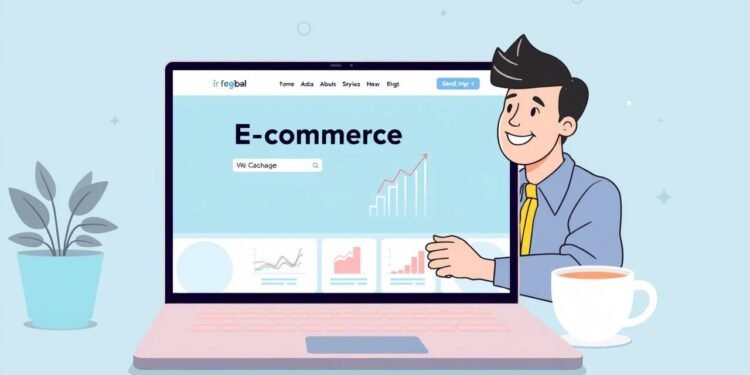In the world of eCommerce, driving traffic to your online store is not enough; a conversion is needed. The eCommerce conversion rate is one of the core vital signs that show how effectively your site converts visitors into customers. A higher conversion rate would mean better sales with higher revenue without additional traffic.
Factors affecting conversions are website design, user experience, and signals of trust, along with mobile responsiveness and marketing. Knowing industry benchmarks and optimizing every part of your online store can influence success to a great extent.
This guide will cover aspects such as the importance of conversion rates, industry standards, common fallacies, and actionable strategies one can use to develop conversions. If abandoned carts, low levels of engagement, or falling sales are the problems bothering you, this article will give concrete suggestions for boosting your eCommerce conversion rate.
Importance of Conversion Rate in eCommerce
Your eCommerce conversion rate is something that affects revenue and profitability directly. A website that has a high rate of conversion is described as persuasive and user-friendly in the way it convinces its visitors to make a purchase. Conversion rate optimization ensures reduced customer acquisition costs for the business, along with an improved ROI.
CRO helps eCommerce stores get the maximum value from the existing traffic. While helping to improve sales efficiency, it eliminates the need to invest more in ads. The main factors contributing to conversion are a clear description of the products with the help of high-quality images that help build trust, the checkout process supporting a good purchase decision, also trust-building elements like reviews available.
Ignoring conversion optimization may lead to lost sales opportunities and a decrease in revenue. It’s actually through bettering the conversion rate that one can be sure one’s marketing will give the best possible return.
Average eCommerce Conversion Rate by Industry
Because of the difference in consumer behavior, product type, and pricing strategy, conversion rates in eCommerce are widely variable by industry. Here are a few numbers to give you a general idea: on average, global eCommerce conversion rates hover between 2% and 3%-some higher, some lower.
- Luxury & Jewelry: ~1%
- Apparel & Fashion: ~2.5%
- Electronics: ~1.5%
- Health & Beauty: ~3%
- Food & Beverages: ~4%
Realistic conversion goals can be set when you know the benchmark for your industry. If the conversion rate is significantly lower compared to the industry average, this might indicate something wrong somewhere in the design of the website, offerings in products, or customer experience.
Common Reasons for Low eCommerce Conversion Rates
Many online stores suffer from low conversion rates due to:
- Complicated Checkout Process: Long or confusing checkout pages contribute to cart abandonment.
- Slow Website Speed: A slow-loading site annoys users and causes a higher bounce rate.
- Lack of Trust Signals: Missing security badges, customer reviews, and refund policies reduce buyer confidence.
- Poor Mobile Optimization: If your store is not mobile-friendly, mobile users may leave without purchasing.
- Weak Product Descriptions & Images: Poor-quality visuals and unclear product details have a negative impact on buyers.
By identifying and correcting these, businesses will be able to increase conversion rates and, thus, sales.
eCommerce Conversion Rate Formula
The conversion rate is calculated using the following formula:
- Conversion Rate=(Total Conversions/Total Visitors)×100
For example, if your store receives 10,000 visitors per month and 300 make a purchase, your conversion rate is:
- (300/10,000)×100=3%
Tracking this metric helps businesses measure performance and identify areas for improvement.
Role of Mobile Optimization in eCommerce Conversions
With mobile shopping on the rise, optimizing your site for mobile users is important. Mobile-friendly stores benefit from:
- Faster Load Times: A quick-loading site translates to reduced bounce rates.
- Responsive Design: It assures ease of browsing on any device.
- Easy Navigation: It makes the discovery of products and checkout easier.
- Mobile Payment Options: Apple Pay, Google Pay, and digital wallets make shopping a lot more convenient.
This is because a non-optimized mobile experience can push away the prospective customer, which is why mobile optimization for higher conversions from such sites is indeed important.
The Impact of Customer Reviews & Social Proof on Conversions
Customers trust other shoppers. Positive reviews, ratings, and testimonials all help in building credibility for a product and thus, in making a sale. More than 90% of the people before making a purchase go through the reviews online.
Types of Social Proof That Boost Conversions:
- Customer Reviews & Ratings: Builds trust and credibility
- User-Generated Content: Photos and videos from other customers create great engagement.
- Influencers & Celebrities: Increase brand authority and attract a new audience.
- Badges & Certifications: Security and guarantee seals that will reassure your customers.
It is with the use of social proof that businesses build more confidence and, therefore, better conversions.
How to Increase Conversion Rate in Sales
Here are a few tips for increasing your conversion rate in eCommerce:
- Present your products well on your product pages: high-quality images and good descriptions that make you want to buy, together with ‘add to cart’ buttons that are truly exceptional.
- Make Checkout Easy: The more fields you require on a form, the less likely people are to complete it. Provide a ‘guest’ checkout option and take payment on-site.
- Site Speed: Optimize images so that the pictures aren’t large files, and enable cache for static elements. Use a host that can deliver speed.
- Build Trust Signals: Show SSL certificates and refund policies and display customer testimonials.
- Emails: Send emails about abandoned carts and personal offers to attract probable buyers.
- Test Landing Pages: Different layouts, headlines, and CTAs may be experimented with to determine what kind of design works the best.
With each of these, continuous optimization helps increase conversion rates and ultimately boosts sales.
Summary
A high eCommerce conversion rate really helps in growing a business. This blog post looked at why conversion rates are so important in regard to industry benchmarks, common causes of low conversions, and practical tips for improving sales. Key takeaways included optimizing product pages, enhancing mobile experiences, leveraging social proof, and simplifying the checkout process-all of, which can be implemented to make sure that eCommerce businesses are able to maximize revenue and achieve sustainable growth.
FAQs about To increase conversion rate ecommerce
What’s a good conversion rate in eCommerce?
The sweet spot generally varies by industry but is typically found in the 2-3% range globally, with better-performing stores reaching 5% or more.
Why is my eCommerce conversion rate so low?
Reasons typically include a slow website, poor mobile optimization, a complicated checkout process, a lack of trust signals, and weak product descriptions.
How can I improve my e-commerce conversion rate without spending more on advertising?
Work on conversion rate optimization: try methods to develop the design of the website, user experience, and trust signals, and simplify the checkout.
How does mobile optimization impact eCommerce conversions?
Hence, the more mobile-optimized a site is, the better the navigation, speedier load times, and ease of checking out, which will cumulatively lead to higher conversions on mobile.
Does free shipping help in conversion rates again?
Yes, indeed, that strong call to action of free shipping helps in reducing cart abandonment and assists in making customers complete their purchases.
How does customer review affect sales performance?
When your customers leave positive reviews and recommend your products, it is perceived as social proof and thus instills trust in the other buyers. As one would expect, this trust results in higher conversion rates.










